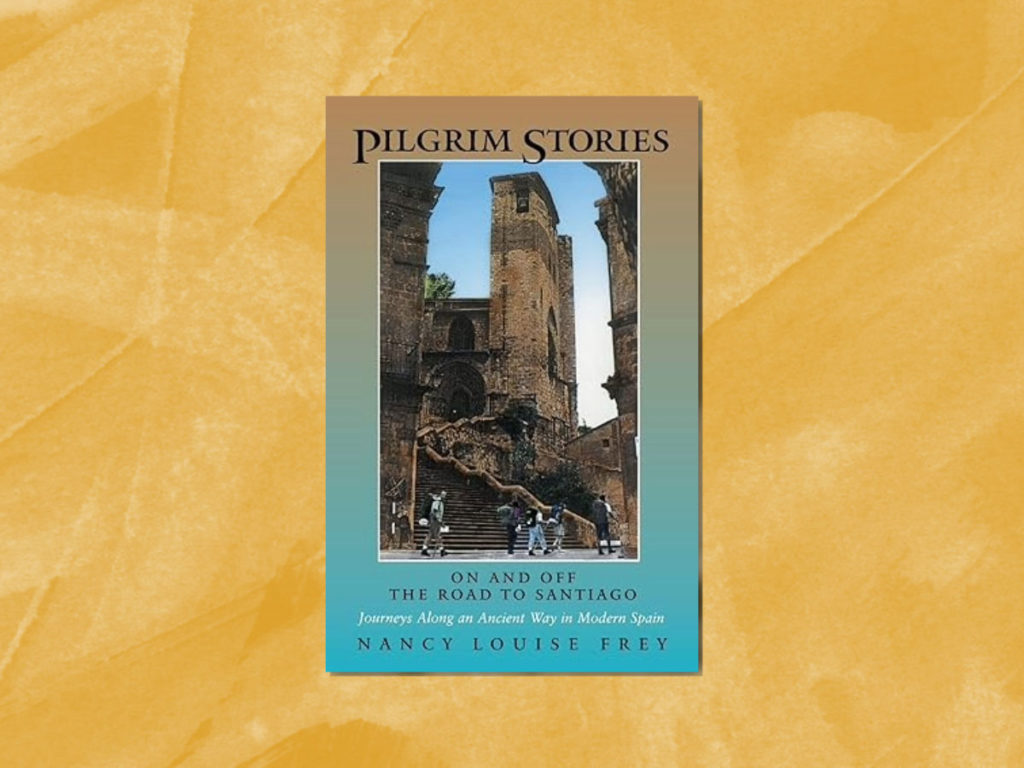Book Review: Pilgrim Stories

Pilgrim Stories: On and Off the Road to Santiago, Journeys Along an Ancient Way in Modern Spain
by Nancy Louise Frey
University of California Press, 1998
313 pages
on Goodreads
Reviewed by Joseph A. Curro, Jr. | Arlington, MA

Pilgrim Stories is an observational study, based on the dissertation of anthropologist Nancy Louise Frey and written at a time before smartphones, Booking.com, Brierley guides, YouTube, podcasts, or The Way. Phone booths were considered creature comforts, and over two-thirds of pilgrims were male. American Pilgrims on the Camino did not yet exist.
The author’s ethnographic research included interviews and data collection, but also personal experience as a pilgrim and hospitalera. She writes, “I spent many hours mopping floors, discussing techniques for removing hair from showers, and learning more vocabulary in Spanish on plumbing than I know in English; all the time amplifying my definition of fieldwork.”
Aspects of the 1990s Camino sound alien to today’s pilgrims. To obtain a credencial, one was expected to present a letter from one’s parish priest, and some of the gatekeepers were particularly strict about this requirement. The Church, in sharp contrast to the Galician government, discouraged further travel to Finisterre, “claiming it to be a site of esoteric practices detrimental to the pilgrimage.”
Reading Pilgrim Stories, one is reminded of just how explosive the growth of the Camino has been. For example, the number of hospitaleros grew from 137 (of which two were American) across 20 albergues in 1994 to 230 in 1997. (To put this in perspective, since American Pilgrims on the Camino began offering its members hospitalero training in 2004, we have trained more than 750 hospitaleros, many of whom have served multiple times.)
The author’s case studies run the gamut from intense emotional experiences and even feelings of spontaneous arousal by Camino pilgrims to familiar physical challenges.
The book’s appendix material looks at the Franco regime’s promotion and manipulation of the Camino and the image of St. James, and the various ways the Spanish and Galician governments and associations developed the routes and infrastructure. There is also a discussion of the Camino within the context of European identity.
Many of the themes of Pilgrim Stories continue to ring true. Tensions flare between walkers and bicyclists, and between self-proclaimed “authentic” pilgrims and tourists. Pilgrims struggle to reintegrate into their old lives after their Caminos. And there is the sometimes difficult alignment of the religious and medieval roots of the Camino with the intentions of modern pilgrims.
This book is an absolute gem, holding its own over a quarter century down the road.

